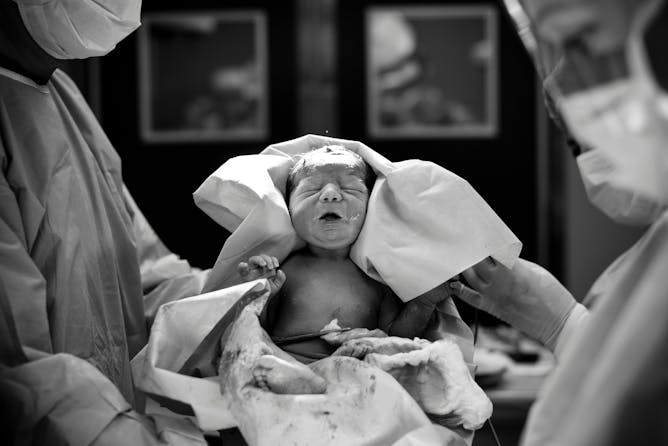|
Gender-affirming care is not “new” or “experimental,” despite what some politicians have claimed. History shows that gender-affirming treatments have been in use in the U.S. since at least the 1960s for transgender people – and even earlier for cisgender and intersex people.
The first transgender medical clinic opened in the U.S. in 1966 at Johns Hopkins University. Since the 1940s, doctors have been prescribing hormones to ensure that cisgender children develop physical characteristics deemed “normal” for their given gender. And surgeons continue to “correct” the anatomy of intersex infants, even when these procedures are unnecessary for the child’s health or well-being.
Transgender history scholar G. Samantha Rosenthal notes that bans on gender-affirming care extend beyond just trans people – they may also restrict everyone’s access to basic medical services that help people feel better in their own bodies.
“Are most Americans willing to live with this level of government intrusion into their bodily autonomy?” she writes.
Also today:
|

Enforcement of binary gender norms has led to unwanted medical interventions on intersex and cisgender children.
Javier Valenzuela/EyeEm via Getty Images
G. Samantha Rosenthal, Roanoke College
The first transgender medical clinic opened in the US in the 1960s. But cisgender and intersex children began receiving similar treatments even earlier – often without their consent.
|
Politics + Society
|
-
Dan Arbell, American University
Israel’s leader, Benjamin Netanyahu, has fired the country’s defense minister. That deepened the country’s crisis over proposed judicial reforms that even military reservists have protested.
-
Kristian Coates Ulrichsen, Rice University
Saudi Arabia’s choice of China to broker its deal with Iran surprised many, but is consistent with its foreign policy agenda.
-
Maxim Krupskiy, Tufts University
Foreign agent laws claimed as a tool to fight back against foreign interference can also be used to silence critics and repress law-abiding NGOs, independent media and individuals.
-
Robbin Mellen Jr., University of South Florida
Senators, governors, representatives and past presidents have to weigh multiple factors before declaring their 2024 run for president. Campaign financing is one of them.
|
|
Science + Technology
|
-
Hany Farid, University of California, Berkeley
In a world of increasingly convincing AI-generated text, photos and videos, it’s more important than ever to be able to distinguish authentic media from fakes and imitations. The challenge is how.
-
Frederick Rivara, University of Washington; Laura Prater, University of Washington
Even fake guns can be dangerous if they are mistaken for real ones by the police or other armed adults.
|
|
Economy + Business
|
-
Grace Melo, Texas A&M University; Pourya Valizadeh, Texas A&M University; Rodolfo M. Nayga Jr., Texas A&M University
Expanding SNAP helped shield low-income children from some of the harm caused by economic upheaval when the COVID-19 pandemic began.
|
|